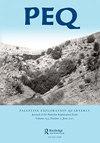The Urban Renovation of Samaria–Sebaste of the 2nd and 3rd centuries ce: Observations on some architectural artefacts
IF 0.8
2区 历史学
0 ARCHAEOLOGY
引用次数: 0
Abstract
ABSTRACT Samaria, renamed Sebaste after the annexation to Herod’s kingdom, was mostly excavated in the first half of the 20th century. Despite its relevant archaeological heritage, the history of the city is scarcely known. During the Middle Imperial period, Samaria–Sebaste flourished, as is suggested by the renovation of several buildings. Under Septimius Severus the city was granted the status of colonia from which is benefited greatly. This paper intends to reappraise data from old excavations, with the aim to frame the local urban renovation of the 2nd and the 3rd centuries ce in a broader regional context. With regard to this objective, marble/stone trade and architectural decoration will be analysed.公元2世纪和3世纪撒玛利亚-赛巴斯特的城市改造:对一些建筑文物的观察
撒玛利亚在被希律王吞并后更名为塞巴斯特,主要是在20世纪上半叶被发掘出来的。尽管有相关的考古遗产,但这座城市的历史却鲜为人知。在帝国中期,撒玛利亚-塞巴斯特繁荣起来,这可以从几座建筑的翻新中看出。在塞普提米乌斯·塞维鲁的统治下,这座城市获得了殖民地的地位,并从中受益匪浅。本文打算重新评估旧挖掘的数据,目的是在更广泛的区域背景下构建2世纪和3世纪的当地城市改造。关于这一目标,大理石/石材贸易和建筑装饰将进行分析。
本文章由计算机程序翻译,如有差异,请以英文原文为准。
求助全文
约1分钟内获得全文
求助全文

 求助内容:
求助内容: 应助结果提醒方式:
应助结果提醒方式:


